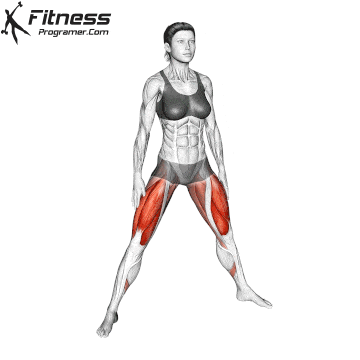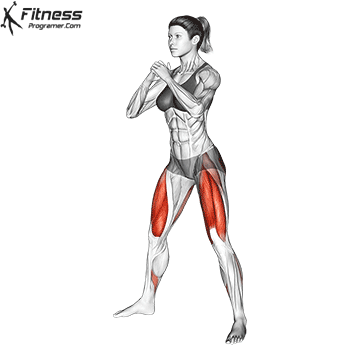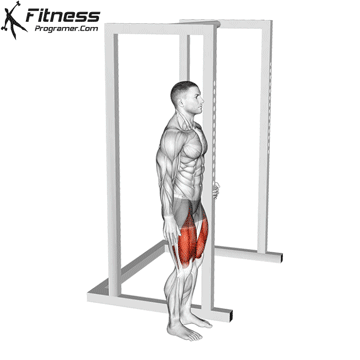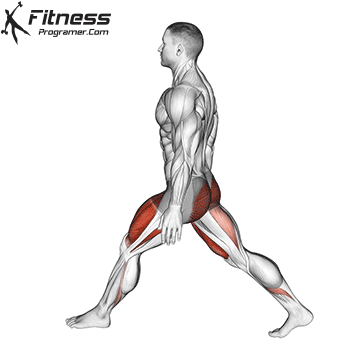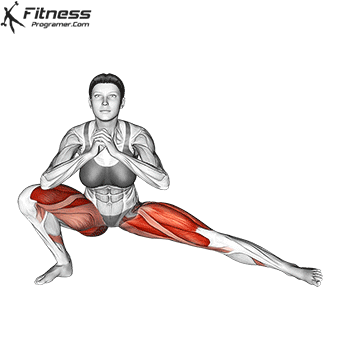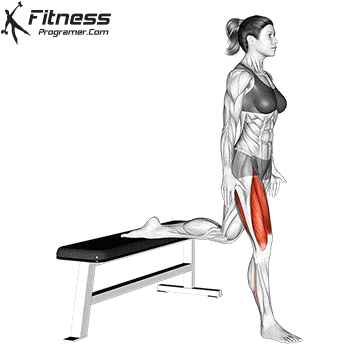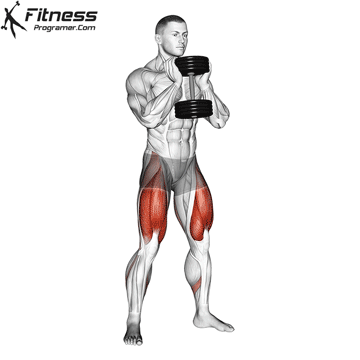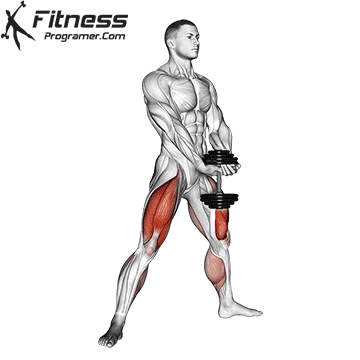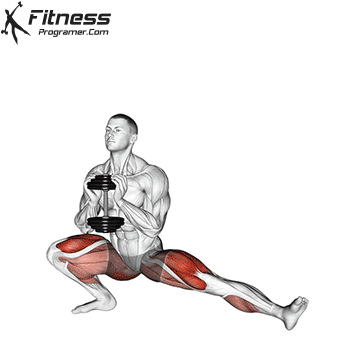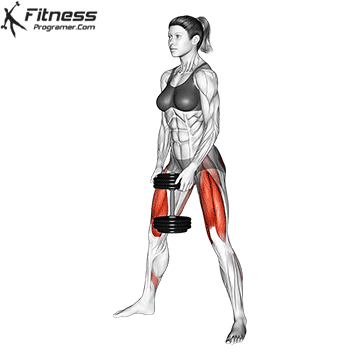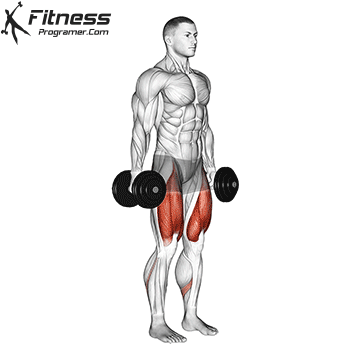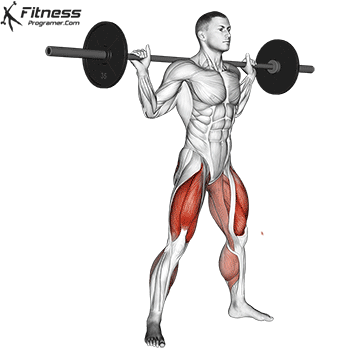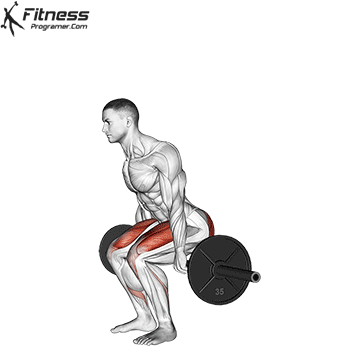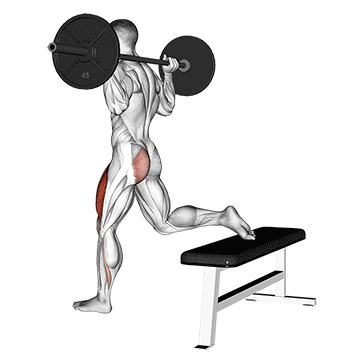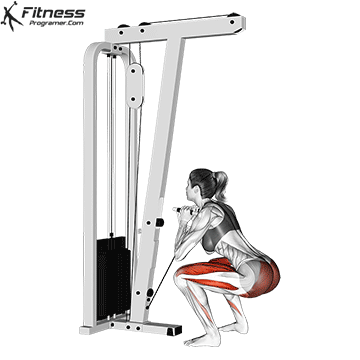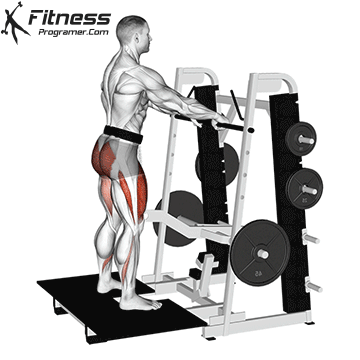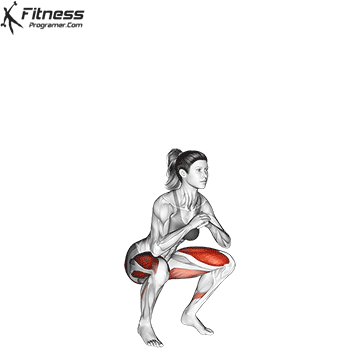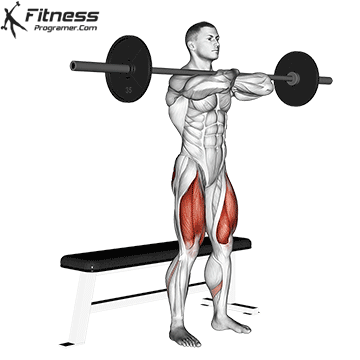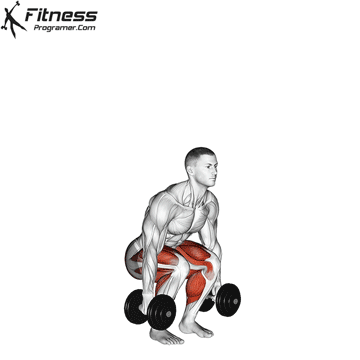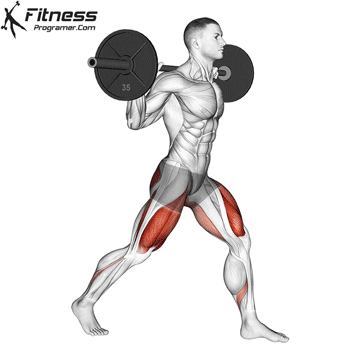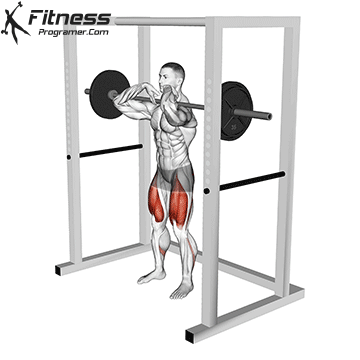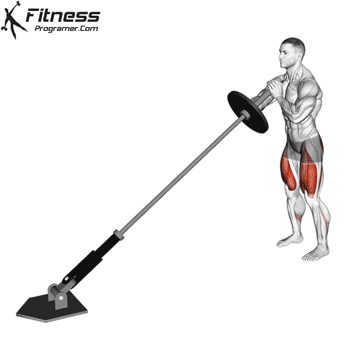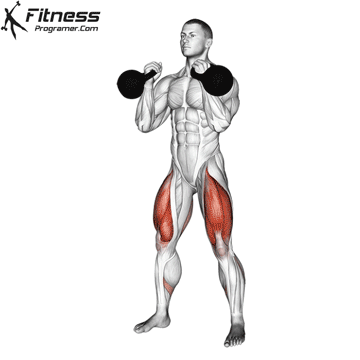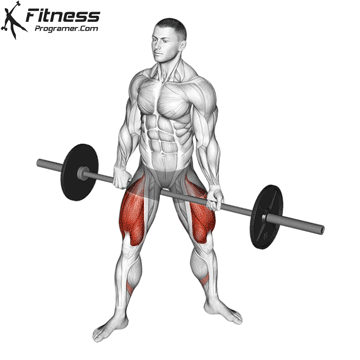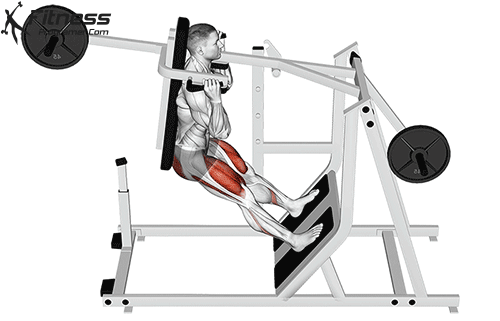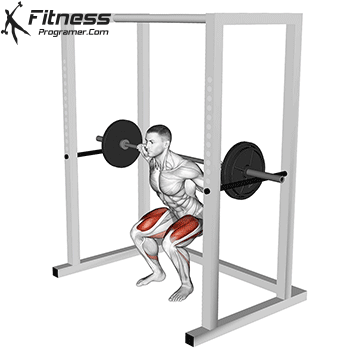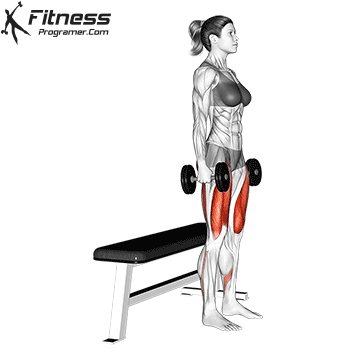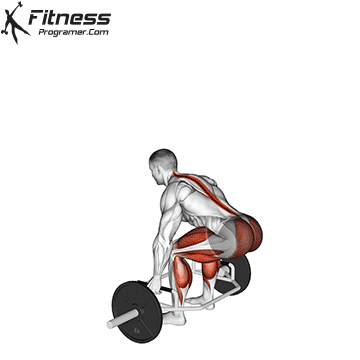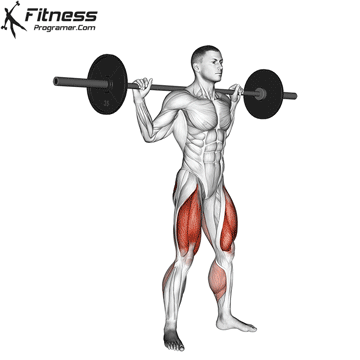Overview
The barbell front squat is a variation of the traditional squat where the bar is placed in a front rack position across the front deltoids and collarbone. This positioning forces the lifter to stay upright and better engages the anterior chain. It is used widely in strength and conditioning programs, Olympic weightlifting, and general fitness programs for developing lower-body strength.
How to do Perform Barbell Front Squat
-
Set the barbell on a squat rack at upper chest level and position yourself under it with the bar resting on your shoulders and collarbone.
-
Cross your arms over the bar or use a clean grip with elbows pointing forward and chest tall.
-
Step back and stand with your feet shoulder-width apart and toes slightly turned out.
-
Brace your core and begin the movement by bending your hips and knees simultaneously.
-
Lower into a squat while keeping your elbows high and torso upright.
-
Descend until your thighs are parallel to the ground or slightly below.
-
Drive through your heels to return to the standing position while maintaining core tension and posture.
Tips for Proper Form
-
Keep your elbows high to support the bar and maintain an upright torso.
-
Maintain a neutral spine with your core braced throughout the movement.
-
Distribute your weight evenly across the midfoot and heels.
-
Use a clean grip or cross-arm grip based on mobility and comfort.
-
Descend with control and avoid letting the knees cave inward.
Common Mistakes
-
Letting the elbows drop, which causes the bar to roll forward.
-
Leaning forward, increasing pressure on the lower back.
-
Improper bar placement, leading to instability or discomfort.
-
Rising onto the toes, shifting tension away from the quads.
-
Not bracing the core, which can compromise balance and form.
Benefits of the Barbell Front Squat
-
Improves Posture and Spine Safety: The upright torso position reduces shear forces on the spine compared to back squats.
-
Targets the Quadriceps More Effectively: The front-loaded bar shifts emphasis from the posterior chain to the quads.
-
Strengthens the Core and Upper Back: The need to maintain an upright posture builds strong, braced abdominal and back muscles.
-
Enhances Athletic Performance: Improves strength in movements requiring powerful leg drive and posture control.
-
Improves Squat Mobility and Mechanics: Encourages proper depth and technique, increasing ankle, knee, and hip mobility.
-
Ideal for Olympic Lifters: The front squat closely mimics the receiving position of the clean, building carryover strength.
-
Reduced Lower Back Strain: Suitable for lifters with back issues who want a safer way to squat heavy.
How to Incorporate Into Your Routine
- For Beginners: Use 2 to 3 sets of 6 to 8 reps with light weight to build technique and bar comfort.
- For Hypertrophy: Perform 3 to 4 sets of 10 to 12 reps, focusing on controlled tempo and full depth.
- For Strength: Use 4 to 5 sets of 3 to 6 reps with heavy weight, keeping strict form and core bracing.
- For Functional Training: Pair 3 sets of 5 to 8 reps with unilateral or explosive drills for sport-specific strength.
- For Circuit Training: Include 8 to 10 reps in a lower-body or total-body strength circuit with minimal rest.
- For General Fitness: Add 2 to 3 sets of 8 to 10 reps to leg day for improved strength and posture.
- For Olympic Weightlifting Prep: Train front squats 2 to 3 times per week to reinforce clean catch positioning.
Barbell Front Squat Muscles Worked
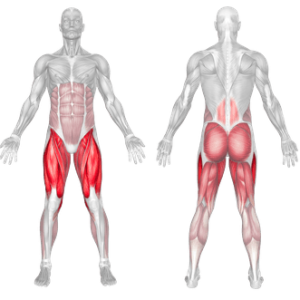
Frequently Asked Questions
Is the barbell front squat better than the back squat?
Not necessarily better, but different. The front squat is more quad-focused and easier on the spine, while the back squat loads the posterior chain more heavily.
What grip should I use for the front squat?
Use the clean grip if you have the wrist and shoulder mobility. Otherwise, the cross-arm grip works well for comfort and control.
Can beginners do the barbell front squat?
Yes. It is highly effective for teaching squat form and building quad and core strength, especially when paired with mobility work.
How often should I include front squats in my program?
One to two times per week is ideal for most lifters, depending on your goals and recovery.



